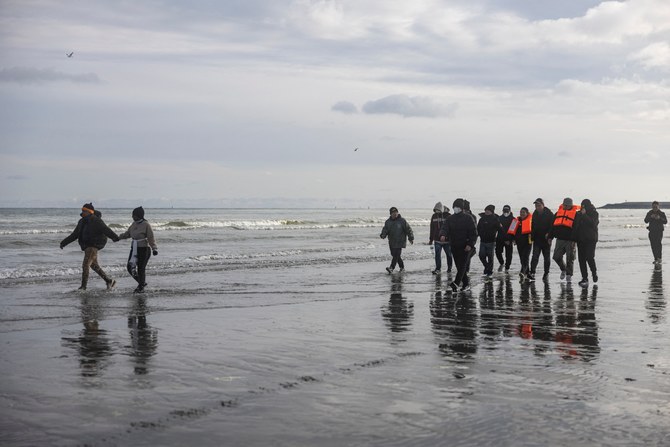
In 50 years, future historians will look back on our times with a different perspective. What may seem to us as the rise of nationalism and populism with an authoritarian twist will have reached an endgame. What will be clear, with hindsight, is that the global order of nation states is now unraveling and is no longer viable.
But this is not how it looks today. Nationalist politicians with an agenda of putting their countries first, making them great again, closing their borders to immigration and protecting their national fabric dominate the news and often win elections. It is a global phenomenon. Nationalism threatens to break up the EU and drives conflicts that result in mass population movements.
I was born in the second half of the 1950s, when the ideal of a homogeneous nation state was at its highest. That ideal characterized the 20th century: we sang national anthems and created all things national, from football teams to philharmonic orchestras. National characteristics were being defined in newly independent states, including language, cuisine, music, literature and a proud history. You had to have a national dress, even if nobody wore it. Nations were great. Sushi was only consumed in Japan and pizza not even in all parts of Italy.
This all happened rather quickly. The ideas behind the nation state germinated in the 19th century and reached their peak in the 1870s following the unification of Germany under Bismarck and Italy under Garibaldi. It took two world wars, the fragmentation of three empires and the end of colonialism to complete the process. There were 50 states that signed the UN charter in 1945. Fifteen years later, the number had doubled, and it is now 193.
New borders aimed to create homogeneous societies with common histories, culture and identity
Nadim Shehadi
The world was rearranged to fit into the new model and the order of independent nation states that was emerging. This was accompanied by a redistribution of populations, with mass movements and demographic change.
New borders aimed to create homogeneous societies with common histories, culture and identity. If the process was glorious, it was not painless and, when the music stopped, some people, like the Kurds, the Basques and the Catalans, were left out. You cannot fit everybody in and the process included expulsions, exterminations and population exchanges.
Ask the Armenians, Greeks, Turks, Jews, Germans, Palestinians, Indians and all sorts of other people who did not fit into national narratives and have had to move on over the last century or so. Turkiye and Greece and India and Pakistan exchanged populations by agreements and millions of Germans were expelled from Eastern Europe. The Armenian genocide and the Holocaust exterminated millions and the breakup of Yugoslavia came with ethnic cleansing.
But hold on, what is the fuss all about now with the apparent rise of nationalism? This did not happen as intensely as with globalization in the 1990s, so why now? If nation states were great to start with, why do we need to make them great again? What we are seeing is the end of the nation state, not the beginning.
The answer is simple: this is not driven by globalization but by demography. Like a full circle, the creation of nation states caused demographic changes and the conflicts that resulted caused even more movements of people. This in turn means that these states will never be the same again. The main reasons for these movements are violent conflicts or failing states and economies. A sovereign state with secure borders and a homogeneous national population and culture is a thing of the past. Furthermore, the 20th century model of excessive state spending and welfare provision also resulted in inflation and an unmanageable debt burden.
The bureaucracy we see today drives a large proportion to move illegally and human trafficking is on the rise
Nadim Shehadi
The Syrian conflict caused the largest population movement in history. Globally, according to the World Bank, more than 180 million people live outside their countries of citizenship. In 2021, 42 percent of asylum applicants in the UK were from the Middle East (three of the top five countries being Iraq, Iran and Syria) and UK Home Office data shows that, of all refugees resettled in the UK from January 2010 to December 2021, about 70 percent were Syrian citizens. The wars in Ukraine and Gaza will undoubtedly have unpredictable demographic consequences. Other failing states are also leading sources of refugees and asylum seekers. The demographics of the new boat people show a mix of Middle East, Africa and Southeast Asia.
In the borderless world of yesterday, this would not have made much difference, as movements were slower and more readily absorbed. The UN created institutions to facilitate this movement, but they actually slowed them down and made them almost impossible. When millions of Germans were displaced from Eastern Europe post-Second World War, there was no Geneva Convention, no UN Refugee Agency and no International Organization for Migration. They were resettled faster and with far less paperwork than it takes now. The bureaucracy we see today drives a large proportion to move illegally and the phenomenon of human trafficking is on the rise.
The intended direction of population movements is toward the developed countries, which are more efficient in controlling their borders. The result is that developing countries like Sudan, often in crisis themselves, end up receiving the bulk of those forcibly displaced. Countries like Lebanon, with up to a third of its population being refugees, may be unrecognizable in a generation.
Europe and the US are desperately trying to ward off illegal immigration and confronting political crises as a result. Politicians win votes by describing immigrant caravans and fleets of small boats as an assault on their borders.
While most states see demographics as a threat and shut down their borders, perhaps some of the Arab Gulf states have the answer in their ability to accommodate foreign workforces multiple times the size of their own population.
If the phenomenon of nation states has existed for barely two centuries, that of population movements and demographic change has been a reality for millennia; it is irreversible and a main driver of historical change.
Nadim Shehadi is an economist and political adviser. He has held positions in academia and think tanks in Europe and the US. He ran a program on the regional dimension of the Middle East Peace Process at Chatham House. X: @Confusezeus












